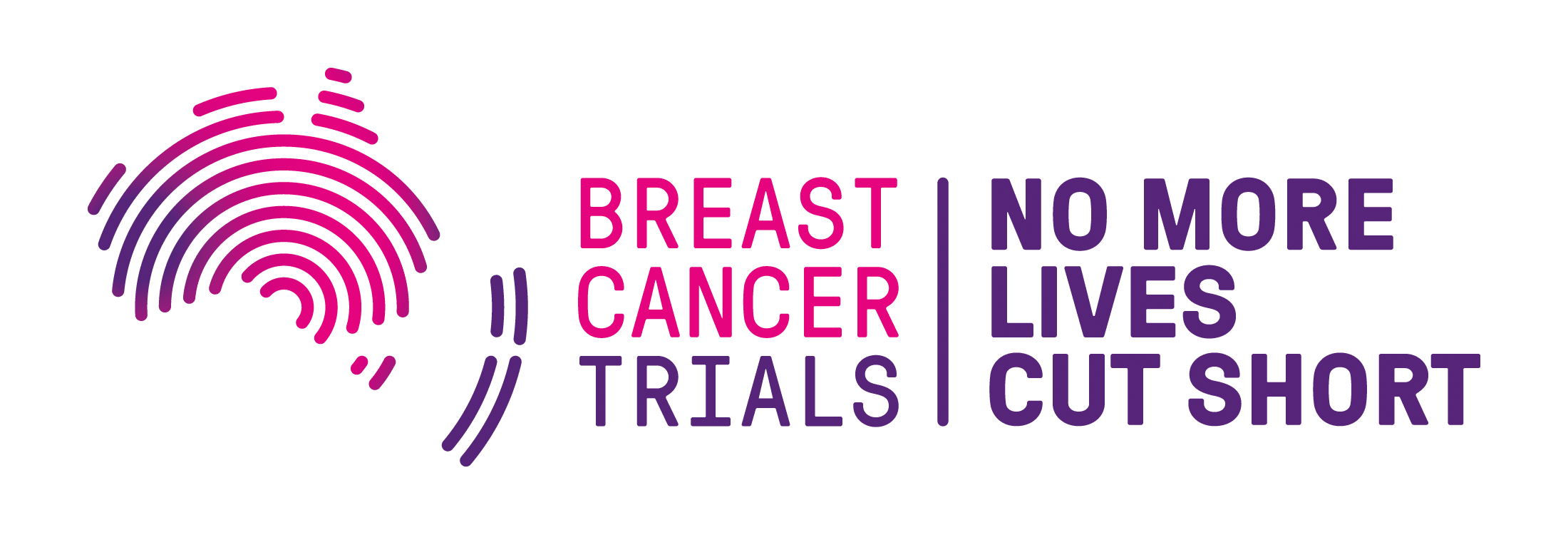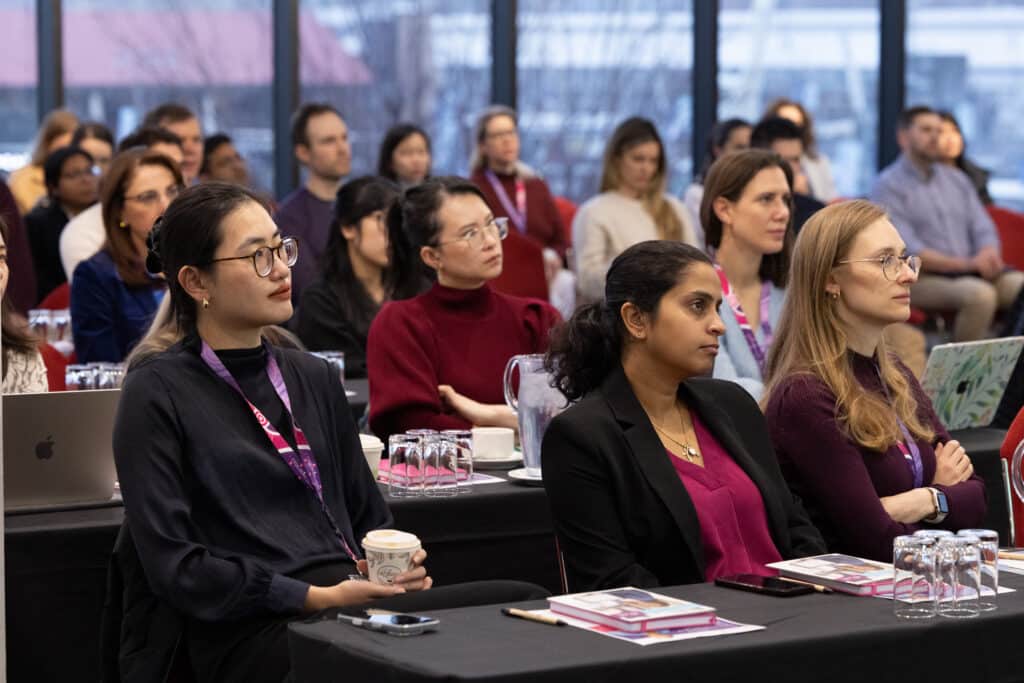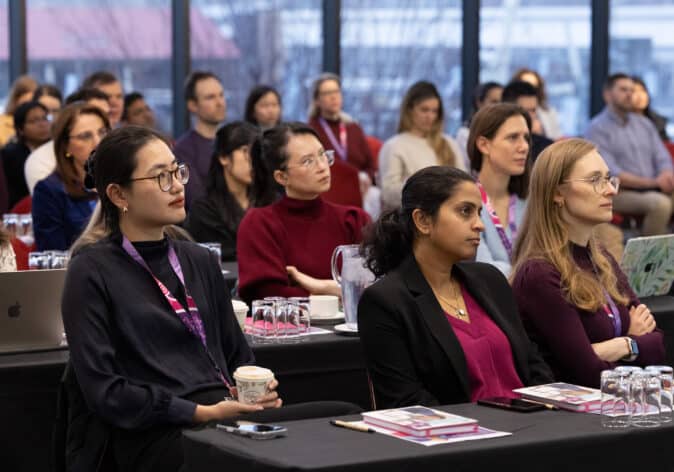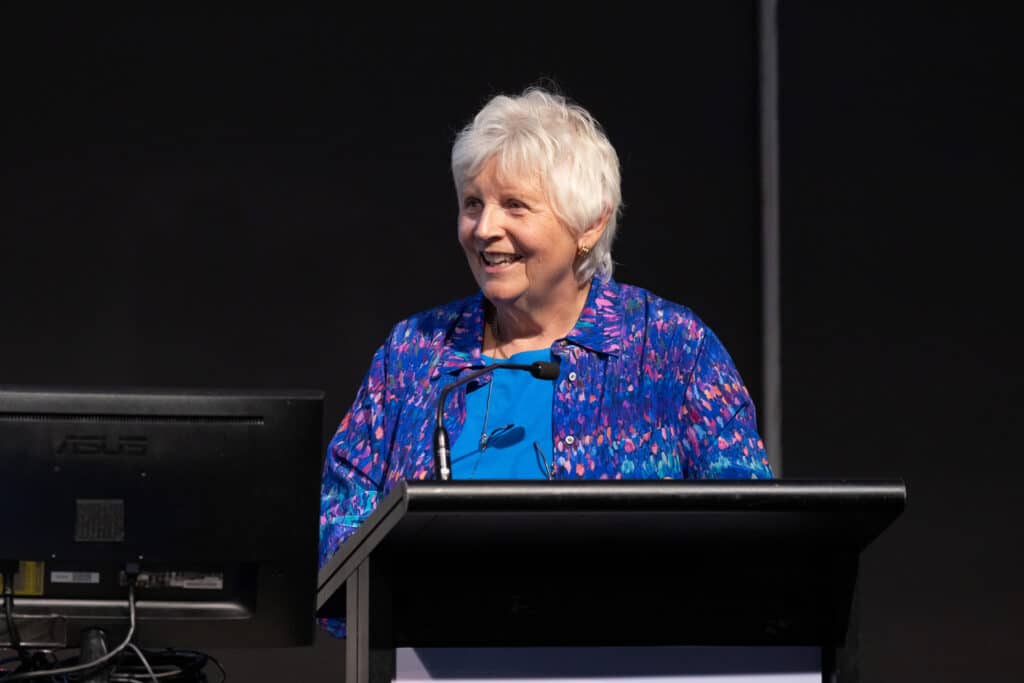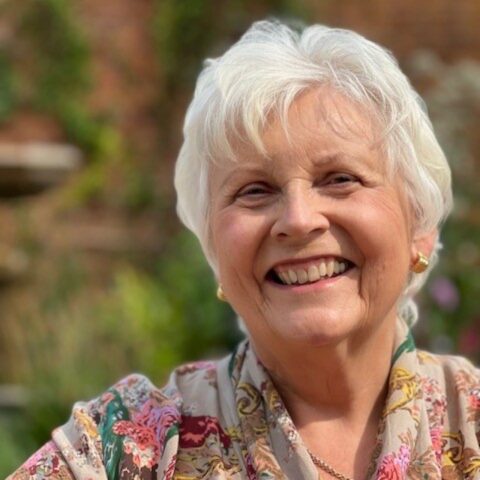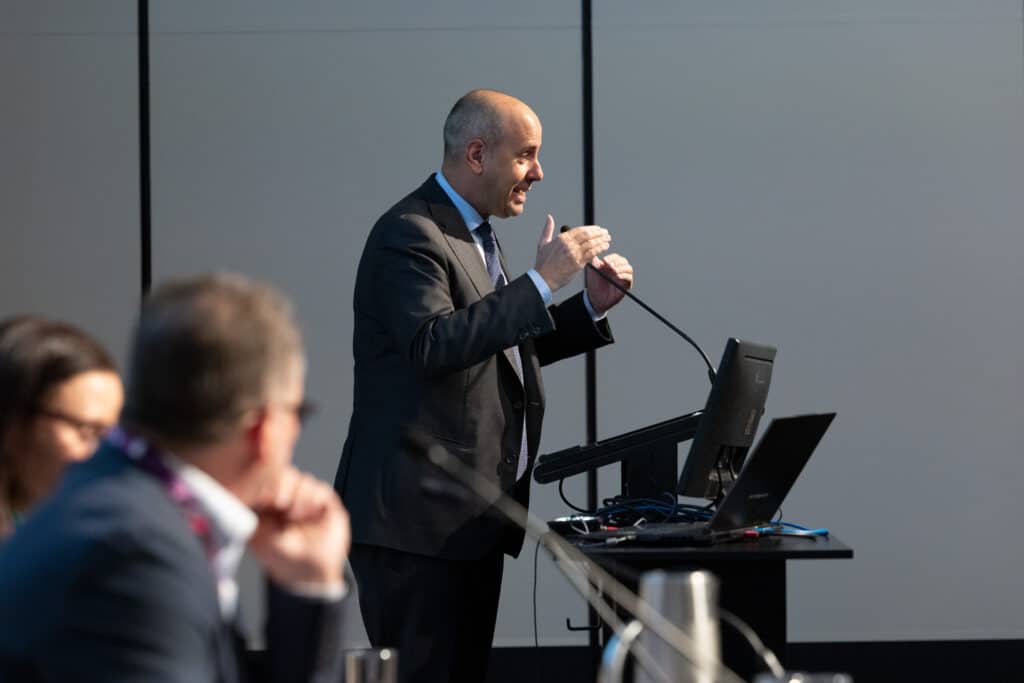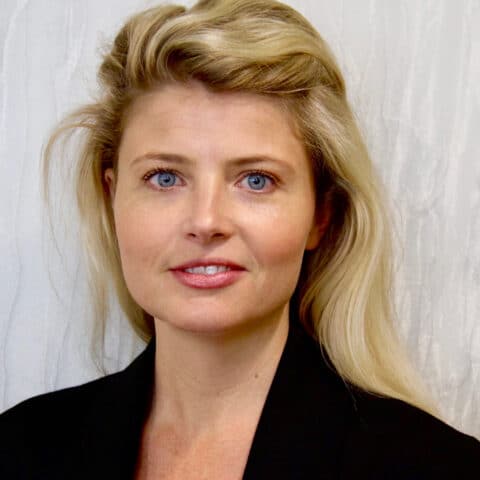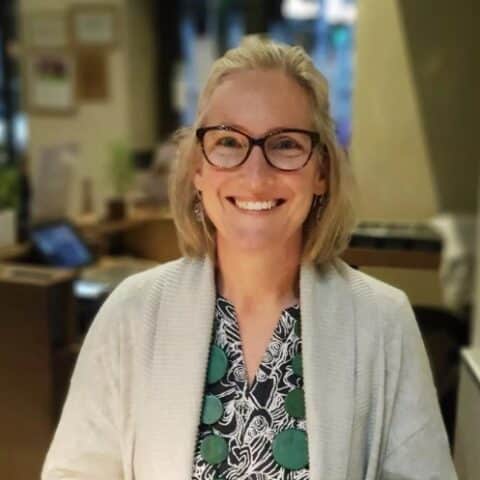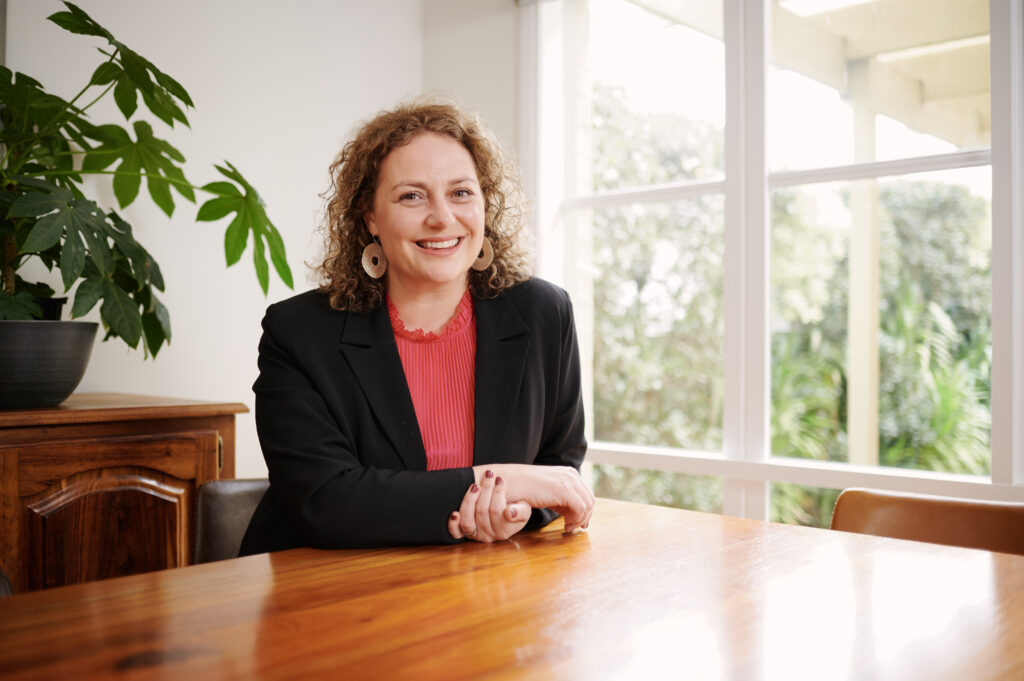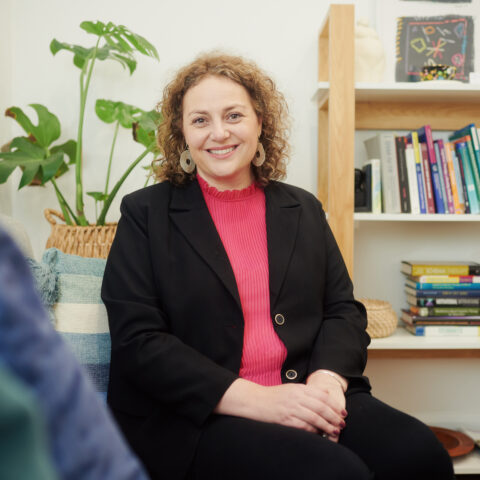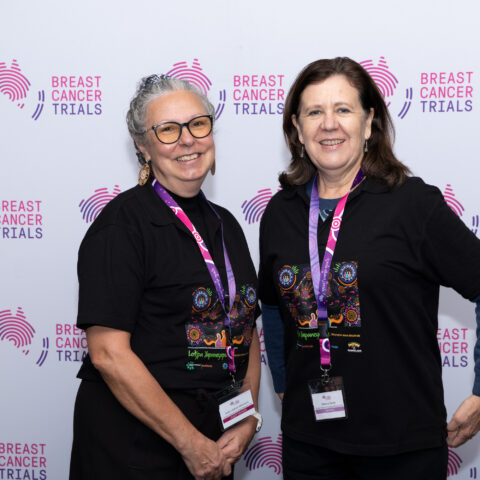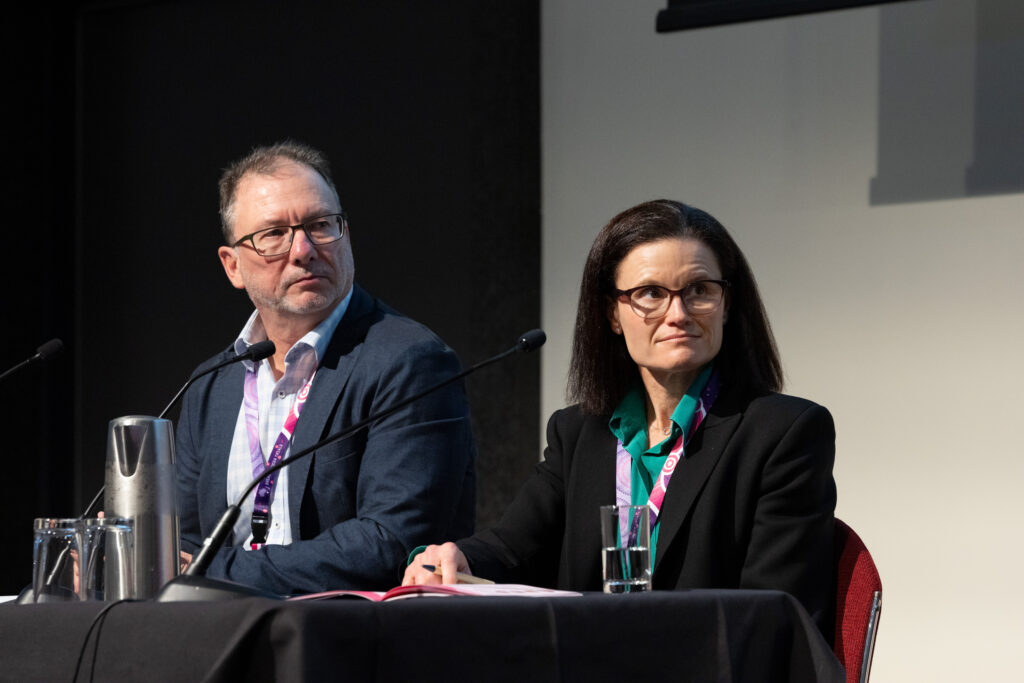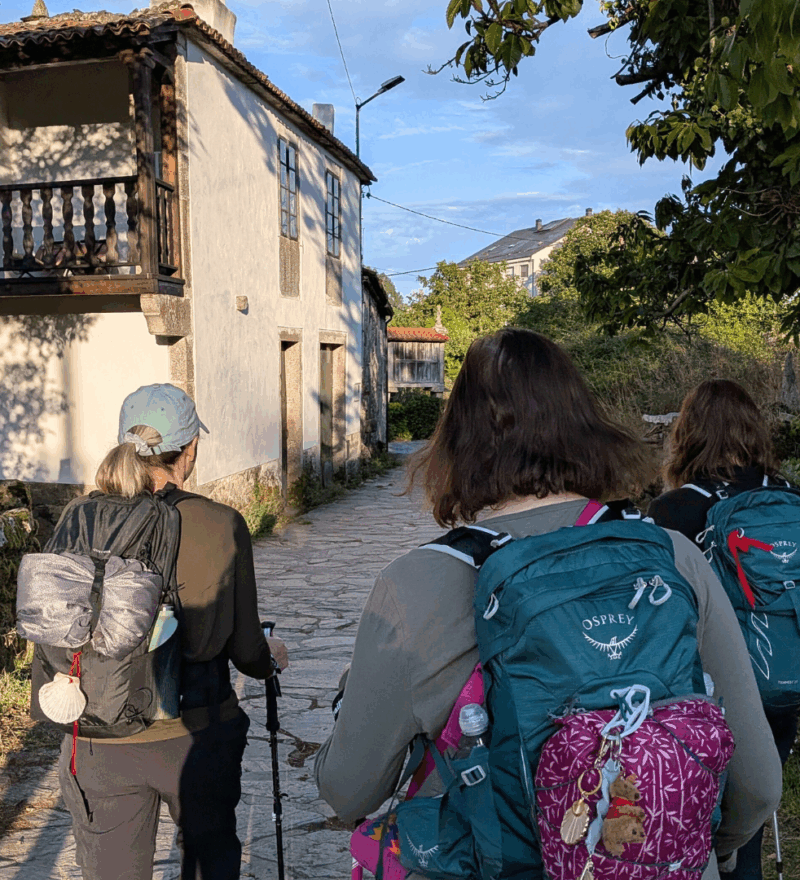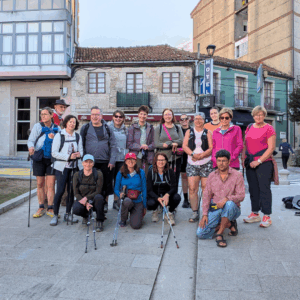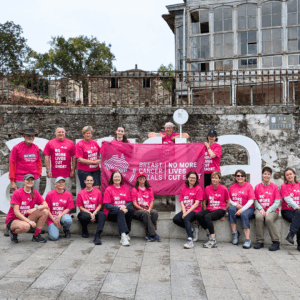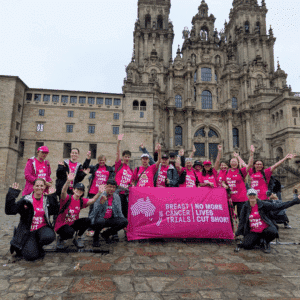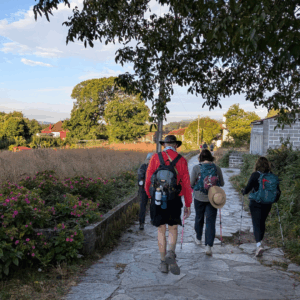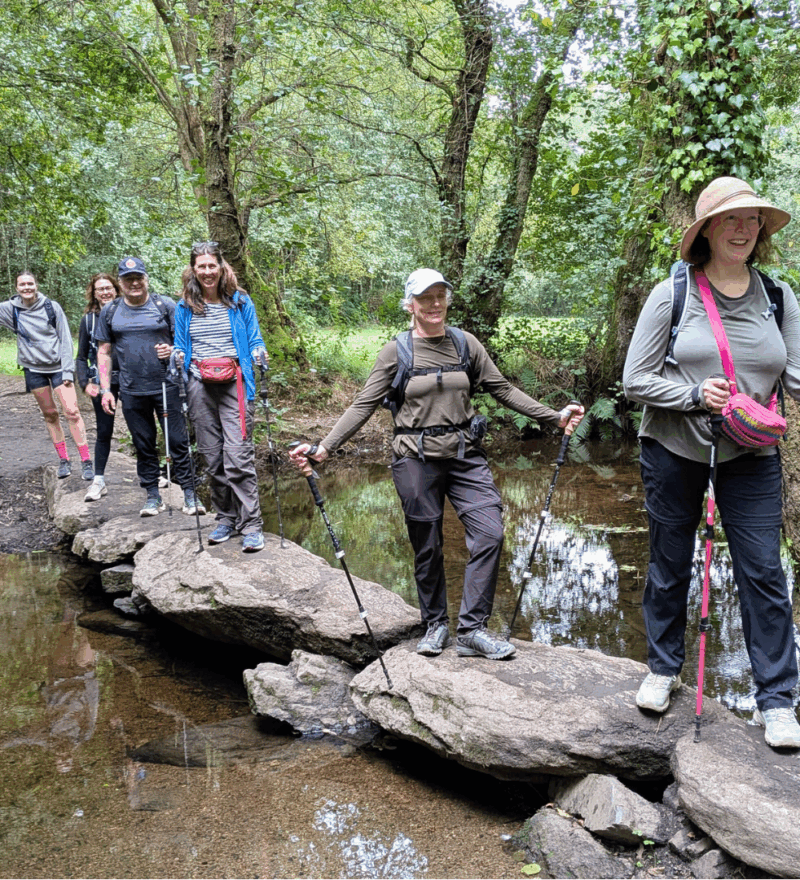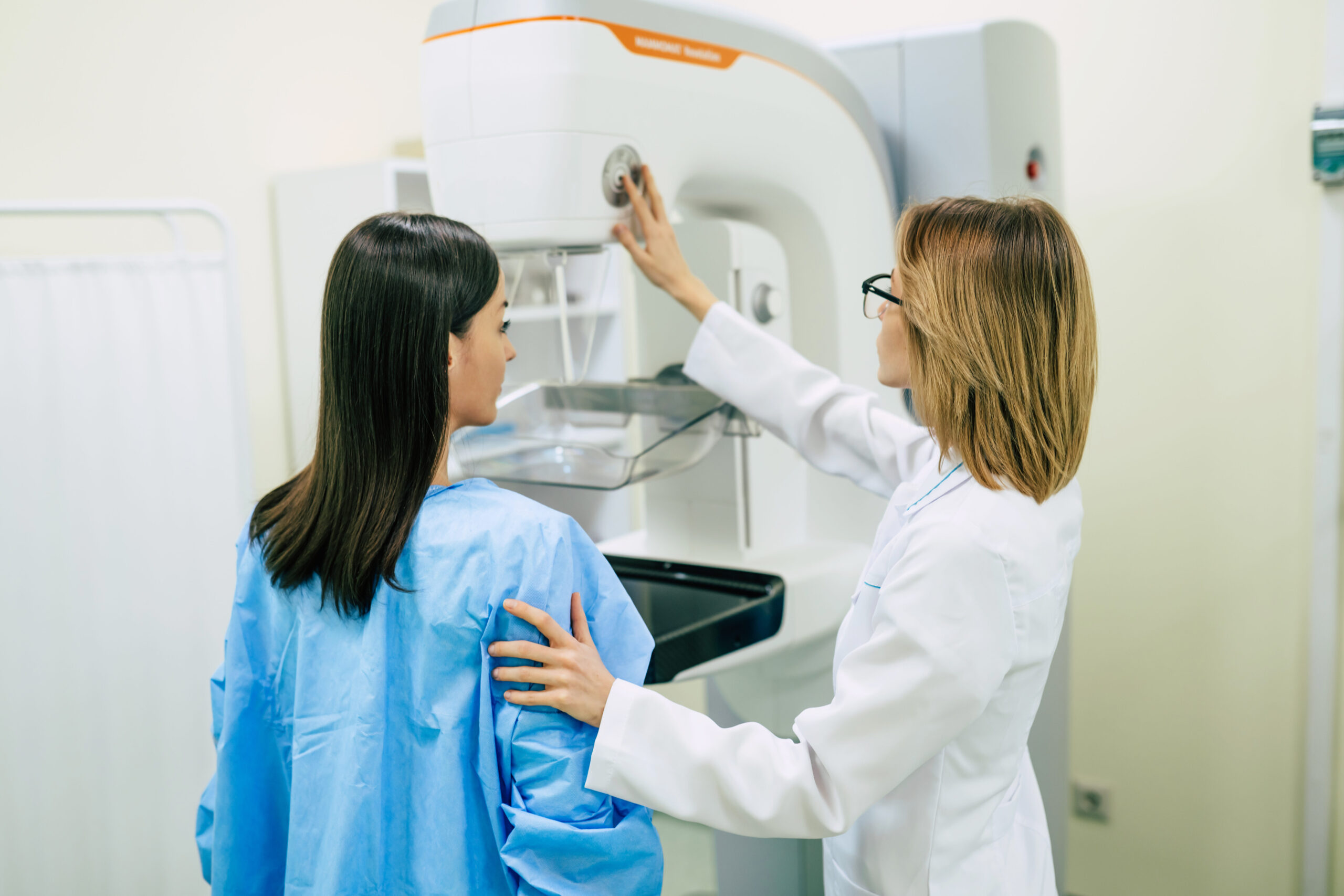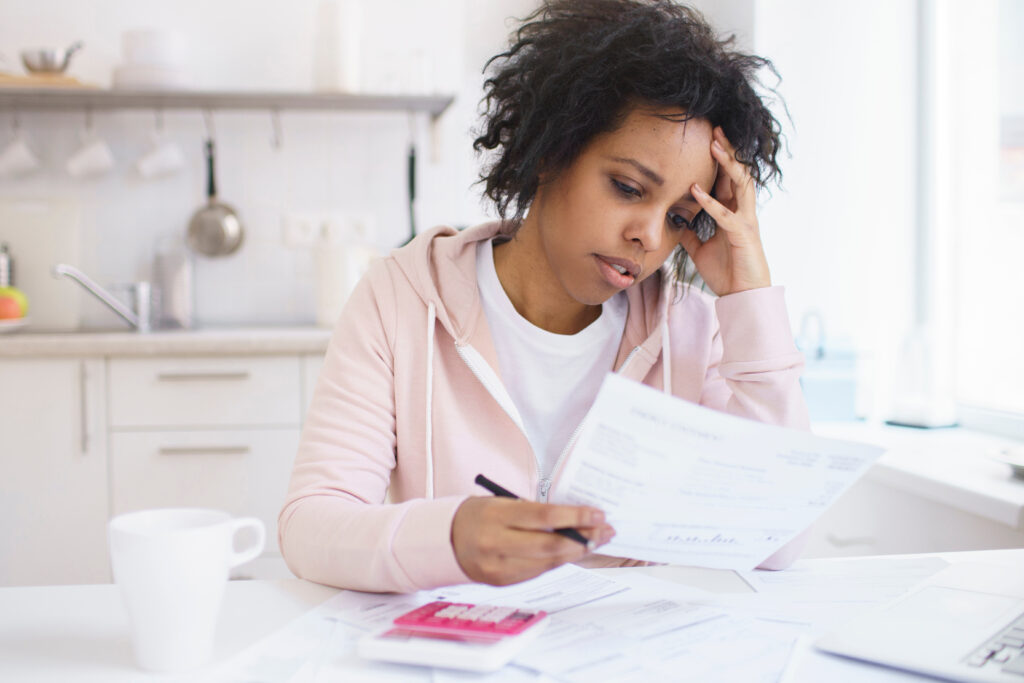Next Gen Oncology: Insights for Trainees and Early-Career Clinicians
Are you a trainee or early career professional in oncology looking to connect, learn and grow?
In this article, we highlight the Trainee and Early Career Day at Breast Cancer Trials Annual Scientific Meeting. A unique opportunity to network with peers, gain insights from leading researchers and kick start your professional development in the field of breast Cancer Research.
“My name is Michelle Li. I’m an early-career medical oncologist and I’m also a clinician researcher. I work at the Peter MacCallum Cancer Centre and I’m also currently undertaking my PhD which ties in very well to my Breast Cancer Trials (BCT) Clinical Fellowship, which is looking at mechanisms of resistance to T-DXd which is one of our breast cancer drugs.”
“My name is Adam Ofri. I’m a breast surgeon, located in Sydney, and I’m also affiliated with BCT.”
“The BCT Trainee and Early Career Day (T&ECD) training and early career day is actually a really important part of the conference. So not only for trainees from medical oncology, which is my specialty, but also from other disciplines including radiation oncology and surgery,” said Michelle.
“It’s really quiet a multidisciplinary environment in which we can get together, they can network, and we can also understand a little bit about other specialties, which really directly impacts upon and influences at work in looking after patients. We get to meet new people, we learn about other specialties, we also get to hear from leaders in the so there’s international speakers from the main conference and also local speakers as well.”
“The day was developed as a means to really engage the younger people, to get the registrars, the fellows and the early career specialists to come to BCT, to get more involved, to get more exposure and more understanding and to be more inclusive,” said Adam.
“The ASM is phenomenal with some really big-name speakers. It’s jam packed with really impressive lectures, but the T&ECD gives the time for those trainees to mingle and interact with these international speakers, have a smaller forum where they can chat and feel more comfortable.”
“And the other thing is breast cancer management is so diverse with so many different streams that when you’re a trainee and a fellow, you sort of only stay in your stream. And the trainee day really gives an opportunity for them to start interacting with people in the other streams. Because we all come together at the MDT and gives them an opportunity to actually ask questions as well and understand a little bit of the complexity of the multi-facets of breast cancer management.”
“And it’s just fun. It’s an opportunity to chat with people and not be too intimidated to speak to a professor who’s come in from overseas and pick their brains about something,” he said.
Listen to the podcast
Are you a trainee or early career professional in oncology looking to connect, learn and grow? In this episode, we highlight the Trainee and Early Career Day at Breast Cancer Trials Annual Scientific Meeting. A unique opportunity to network with peers, gain insights from leading researchers and kick start your professional development in the field of breast Cancer Research.

Key takeaways
1. A vital platform for connection, learning, and belonging
The Trainee and Early Career Day (T&ECD) offers a rare opportunity for emerging oncologists, surgeons, and allied professionals to connect across disciplines, learn from international leaders, and feel part of the wider Breast Cancer Trials (BCT) community. It helps participants build lasting professional networks and a sense of belonging in the field.
2. A supportive, multidisciplinary learning environment
Unlike the larger Annual Scientific Meeting (ASM), the trainee day provides a more relaxed and interactive setting where participants can freely ask questions, discuss complex cases, and learn from experts in other specialties—helping them understand the full, multidisciplinary scope of breast cancer care.
3. A launchpad for professional growth and research opportunities
Engagement in the T&ECD can lead to meaningful career progression. Michelle Li’s journey—from attending her first trainee day to joining the organising committee and becoming a BCT Clinical Fellow—illustrates how participation can open doors to research collaborations, mentorship, and international experience.
4. Investing in the next generation drives innovation in breast cancer care
Bringing fresh perspectives, new ideas, and enthusiasm from trainees is essential for the continued evolution of breast cancer research and clinical practice. Early-career involvement ensures that future leaders sustain and expand on the progress made through clinical trials—pushing boundaries toward better outcomes for patients.
What can attendees expect from the day?
“For a trainee, when they turn up for the day, we have some lectures, we have opportunities to ask questions galore, it’s encouraged. And then we have typically a stage where we’ve got complex cases that are presented that are selected by fellows who have applied. After that we have the international guest speakers that are attending and they are actually part of the panel that can answer the questions,” said Adam.
“And we get a wide range of input from different subspecialties. And the trainees are just empowered really to fire off questions and to ask the things that they may feel exceptionally intimidated to ask at the ASM. And they can ask world leaders questions to really help their understanding.”
“It is a really interesting day. You’re not seeing the same studies that you’ve seen many, many times already. You’re hearing about interesting cases that you might discuss in your day-to-day clinical work. You’re hearing about interesting aspects of your clinical practise you haven’t heard about before,” said Michelle.
“From memory, we’ve talked about treatment in pregnancy, for example, fear of recurrence, dietary recommendations for our patients, it’s really just an opportunity to learn about things that you might not have had an opportunity to learn about before. And at the end of the day, you get to go and bring all the information back to your parent hospitals. There’s also a really good dinner the night before as well where you get to sit down and meet everyone,” she said.
How does the day help people who are just starting out in breast cancer research, or clinical practice?
“I find that particularly in a field like breast cancer, you always see the same faces over and over again. And it’s really important to get to know your colleagues so that you can have research collaborations in the future. You can work together in the management of your patients locally and also, you know, within the state. And I think that not only having those connections is really helpful, but I think it also helps you feel like you’re really part of the community and you have a real sense of belonging,” said Michelle.
“So, I attended my first trainee day in 2024 when it was up in Cairns. From there, I was invited to be a part of the organising committee. From there I also heard about the BCT Clinical Fellowships, which I’m now a recipient of. And that’s allowed me to go and do further research, particularly internationally with some of our partner hospitals.”
“So really, that first introduction to BCT has really already started me on a much better trajectory for my career than I would have expected. So I think it’s truly very integral to my journey so far,” she said.
“The Trainee and Early Career Day is absolutely relevant to your career. It is a really great experience if you’re already here for the conference or if you’re coming after the conference. I think if you’re interested in breast cancer and you’re interested in meeting other people in the field; this is an absolute no brainer. You should definitely come,” said Michelle.
What would you say to someone who is unsure about attending?
“If you’ve got any interest in breast cancer, come along. There’s really nothing to lose, there’s only something to gain. For registrars who are in medical oncology, this is your opportunity to understand what it is that surgeons do or pick the brains of a radiation oncologist. For surgeons, we can actually understand what it is that radiation oncology does and understand a bit more about the drugs of what is being described,” said Adam.
“We can also learn more about psychiatry, radiology, understand patient impact, and it just gives an opportunity to wet your palate, if you will, about breast cancer management. And it’s always had a really good outcome,” he said.
Why is it so important that the next generation of researchers and clinicians get involved with Breast Cancer Trials?
“As I explained to all of my patients, all the gold standard treatments that they have today were once trials. So, BCT are really the way forward for making sure that we can offer the best treatments to our patients, and we can offer the best outcomes for our patients. And as they have in their main motto, we want to make sure that there are no more lives that are cut short,” said Michelle.
“I think breast cancer clinical trials are really where we should be investing our time and our energy, and being a part of the trainee day is just one step forward on that journey. We need to have fresh minds, new thoughts, that’s we need to get change. Breast cancer management has changed so much in the last decade alone, let alone the last 60-80 years,” said Adam.
“And it’s always been because of people thinking outside the box. And you can’t get that by the same group of people. If you don’t want stagnancy, you need to have fresh enthusiasm, new motivation, new ideas, and different ways of thinking.”
“And all of this is really what leads to the dynamic aspect of breast cancer management. It’s what is really promoted and encouraged breast cancer clinical trials research. And we can see some absolutely incredible trials that are coming out that just really take a different mindset, a different way of thinking.”
“It’s the only way that you get that, by bringing in new people, young people, and eventually everyone retires, so we need new people to come in to take the reins and improve upon what has already been done really well. I mean, the trainees, the fellows, the early career people are the future of BCT, and it’s all about making everyone feel as included and as comfortable as possible,” he said.
QUICK ACCESS
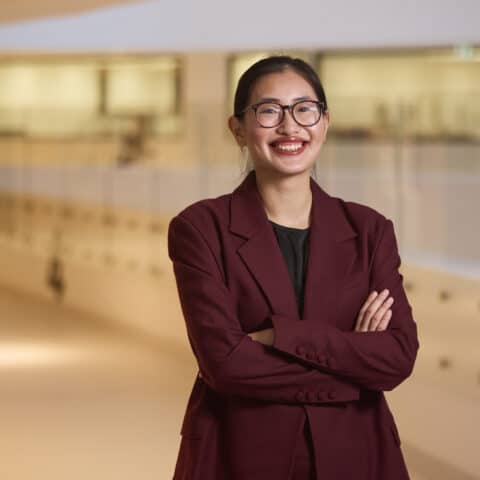
Dr Michelle Li

Dr Adam Ofri
Support Breast Cancer Research
Next Gen Oncology: Insights for Trainees and Early-Career Clinicians
Are you a trainee or early career professional in oncology looking to connect, learn and grow? In this episode, we highlight the Trainee and Early Career Day at Breast Cancer Trials Annual Scientific Meeting.
Podcast Transcript
-
Next Gen Oncology: Insights for Trainees and Early-Career Clinicians
Are you a trainee or early career professional in oncology looking to connect, learn and grow? In this episode, we highlight the Trainee and Early Career Day at Breast Cancer Trials Annual Scientific Meeting. A unique opportunity to network with peers, gain insights from leading researchers and kick start your professional development in the field of breast Cancer Research.
“My name is Michelle Li. I’m an early-career medical oncologist and I’m also a clinician researcher. I work at the Peter MacCallum Cancer Centre and I’m also currently undertaking my PhD which ties in very well to my Breast Cancer Trials (BCT) Clinical Fellowship, which is looking at mechanisms of resistance to T-DXd which is one of our breast cancer drugs.”
“My name is Adam Ofri. I’m a breast surgeon, located in Sydney, and I’m also affiliated with BCT.”
“The BCT Trainee and Early Career Day (T&ECD) training and early career day is actually a really important part of the conference. So not only for trainees from medical oncology, which is my specialty, but also from other disciplines including radiation oncology and surgery,” said Michelle.
“It’s really quiet a multidisciplinary environment in which we can get together, they can network, and we can also understand a little bit about other specialties, which really directly impacts upon and influences at work in looking after patients. We get to meet new people, we learn about other specialties, we also get to hear from leaders in the so there’s international speakers from the main conference and also local speakers as well.”
“The day was developed as a means to really engage the younger people, to get the registrars, the fellows and the early career specialists to come to BCT, to get more involved, to get more exposure and more understanding and to be more inclusive,” said Adam.
“The ASM is phenomenal with some really big-name speakers. It’s jam packed with really impressive lectures, but the T&ECD gives the time for those trainees to mingle and interact with these international speakers, have a smaller forum where they can chat and feel more comfortable.”
“And the other thing is breast cancer management is so diverse with so many different streams that when you’re a trainee and a fellow, you sort of only stay in your stream. And the trainee day really gives an opportunity for them to start interacting with people in the other streams. Because we all come together at the MDT and gives them an opportunity to actually ask questions as well and understand a little bit of the complexity of the multi-facets of breast cancer management.”
“And it’s just fun. It’s an opportunity to chat with people and not be too intimidated to speak to a professor who’s come in from overseas and pick their brains about something,” he said.
If someone’s never attended before, what can they expect from the day?
“For a trainee, when they turn up for the day, we have some lectures, we have opportunities to ask questions galore, it’s encouraged. And then we have typically a stage where we’ve got complex cases that are presented that are selected by fellows who have applied. After that we have the international guest speakers that are attending and they are actually part of the panel that can answer the questions,” said Adam.
“And we get a wide range of input from different subspecialties. And the trainees are just empowered really to fire off questions and to ask the things that they may feel exceptionally intimidated to ask at the ASM. And they can ask world leaders questions to really help their understanding.”
“It is a really interesting day. You’re not seeing the same studies that you’ve seen many, many times already. You’re hearing about interesting cases that you might discuss in your day-to-day clinical work. You’re hearing about interesting aspects of your clinical practise you haven’t heard about before,” said Michelle.
“From memory, we’ve talked about treatment in pregnancy, for example, fear of recurrence, dietary recommendations for our patients, it’s really just an opportunity to learn about things that you might not have had an opportunity to learn about before. And at the end of the day, you get to go and bring all the information back to your parent hospitals. There’s also a really good dinner the night before as well where you get to sit down and meet everyone,” she said.
So how does the day help people who are just starting out in breast cancer research or clinical practise?
“I find that particularly in a field like breast cancer, you always see the same faces over and over again. And it’s really important to get to know your colleagues so that you can have research collaborations in the future. You can work together in the management of your patients locally and also, you know, within the state. And I think that not only having those connections is really helpful, but I think it also helps you feel like you’re really part of the community and you have a real sense of belonging,” said Michelle.
“So, I attended my first trainee day in 2024 when it was up in Cairns. From there, I was invited to be a part of the organising committee. From there I also heard about the BCT Clinical Fellowships, which I’m now a recipient of. And that’s allowed me to go and do further research, particularly internationally with some of our partner hospitals.”
“So really, that first introduction to BCT has really already started me on a much better trajectory for my career than I would have expected. So I think it’s truly very integral to my journey so far,” she said.
What would you say to someone who’s unsure about coming or thinks it might not be relevant to them?
“If you’ve got any interest in breast cancer, come along. There’s really nothing to lose, there’s only something to gain. For registrars who are in medical oncology, this is your opportunity to understand what it is that surgeons do or pick the brains of a radiation oncologist. For surgeons, we can actually understand what it is that radiation oncology does and understand a bit more about the drugs of what is being described,” said Adam.
“We can also learn more about psychiatry, radiology, understand patient impact, and it just gives an opportunity to wet your palate, if you will, about breast cancer management. And it’s always had a really good outcome,” he said.
“It is absolutely relevant to your career. It is a really great experience if you’re already here for the conference or if you’re coming after the conference. I think if you’re interested in breast cancer and you’re interested in meeting other people in the field; this is an absolute no brainer. You should definitely come,” said Michelle.
And why is it so important that the next generation of researchers and clinicians get involved with Breast Cancer Trials?
“As I explained to all of my patients, all the gold standard treatments that they have today were once trials. So, BCT are really the way forward for making sure that we can offer the best treatments to our patients, and we can offer the best outcomes for our patients. And as they have in their main motto, we want to make sure that there are no more lives that are cut short,” said Michelle.
“I think breast cancer clinical trials are really where we should be investing our time and our energy, and being a part of the trainee day is just one step forward on that journey. We need to have fresh minds, new thoughts, that’s we need to get change. Breast cancer management has changed so much in the last decade alone, let alone the last 60-80 years,” said Adam.
“And it’s always been because of people thinking outside the box. And you can’t get that by the same group of people. If you don’t want stagnancy, you need to have fresh enthusiasm, new motivation, new ideas, and different ways of thinking.”
“And all of this is really what leads to the dynamic aspect of breast cancer management. It’s what is really promoted and encouraged breast cancer clinical trials research. And we can see some absolutely incredible trials that are coming out that just really take a different mindset, a different way of thinking.”
“It’s the only way that you get that, by bringing in new people, young people, and eventually everyone retires, so we need new people to come in to take the reins and improve upon what has already been done really well. I mean, the trainees, the fellows, the early career people are the future of BCT, and it’s all about making everyone feel as included and as comfortable as possible,” he said.
